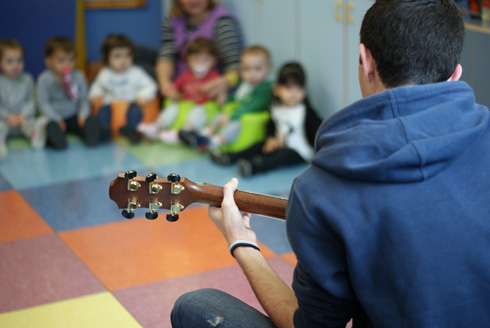
Joint attention is a skill that is learned at a young age and occurs when two people share a common focus on and interest in an object, event, or person due to one person alerting another. This skill can emerge as early as nine months of age and should be well-established by 18 months of age. Joint attention involves social and communication skills, and these cannot develop well without acquisition of joint attention.
Children with autism have deficits in social and communication skills, and many speculate that an interruption in the development of joint attention in these children contributes to these deficits. Therefore, it is important to encourage the development of joint attention in children with autism.
Studies have found that when an adult interacting with a child with autism during play remained either contingent or imitative of the behavior of the child, social communication skills, language development, and joint attention showed great improvements. This imitative method can be reflected through music, or more specifically improvisational music therapy. Since music engages children with autism, improvisational music therapy can be effective in encouraging emotional communication, social interaction, and self-expression. Facilitated by a board-certified music therapist, improvisational music therapy is the experience of the music therapist using music to imitate and match a child’s non-musical and musical expression in order to achieve musical attunement. Musical attunement involves using improvised music to respond to the child’s expressions in a moment-by-moment, sensitive, and attentive manner. Rhythmic patterns, dynamics, pulse, melodic contour, and other musical elements are matched so that the child and therapist share a common musical foundation. The result is often that the child joins with or sometimes initiates interaction with the therapist. Through this interaction, improvisational music therapy has the potential to encourage the development of joint attention.
Kim, Wigram, & Gold (2008) aimed to explore what effects improvisational music therapy had on joint attention behaviors in young children with autism compared to play therapy. Ten boys and girls aged three to five years old and diagnosed with autism participated in the study. The improvisational music therapy sessions were 30 minutes long and occurred weekly for 12 weeks. The play sessions with toys, which served as the control condition, were also 30 minutes long and occurred weekly for 12 weeks. The participants were randomly assigned to two groups: group one had music therapy sessions first and play therapy sessions second, and group two had play therapy first and music therapy second.
The researchers found that generally, the improvisational music therapy improved joint attention behaviors more than play therapy. One measure they used that evaluated eye contact and alternating eye contact found that most participants exhibited noticeable improvement in joint visual attention skills during and after music therapy sessions than during and after play sessions.
Participants’ social skills were positively affected by the music therapy sessions, which the researchers highlighted: “As the process of improvisational music therapy facilitated simultaneous coordination of ‘listening’, ‘visual referencing’ and ‘responding’ and ‘engaging’, the results suggested that improvisational music therapy facilitated the spontaneous process of social learning and provided the premise for social motivation in children with autism” (Kim, Wigram, & Gold, 2008, p. 1764).
Melissa Heffner, MT-BC
May 2015 Blog – COMT
Kim, J., Wigram, T., & Gold, C. (2008). The effects of improvisational music therapy on joint attention behaviors in autistic children: A randomized controlled study. Journal of Autism and Developmental Disorders, 38, 1758-1766.
